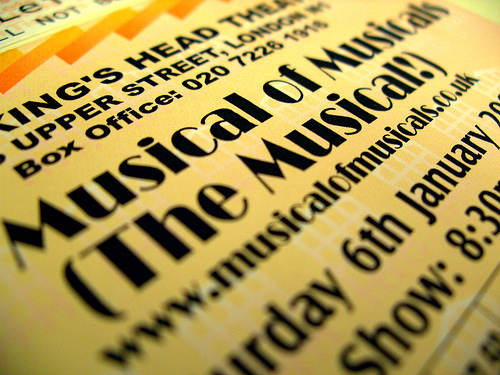
Image Credit: Phil Gyford
For a handout, download the PDF document outlining this assignment.
Notes for the Instructor: The design of this unit is to teach students to do analysis of visual media like musicals, which include song and dance as well as traditional scripts and visual elements, by focusing on the issues of rhetorical delivery (specifically, the performance of the actors within the stage/camera shot, and the visual elements associated with that performance). This unit was built to go after a more traditional unit that focused on analyzing the lyrical content of musicals’ songs, and to encourage students to tie lyric to delivery.
The elements of the unit included as follows:
Week 1: Introduce terminology of delivery, do comparative analysis of examples in class.
Week 2: Watch two versions of a full-length musical and analyze them in class.
Week 3: Write a short comparative rhetorical analysis (1-2 pages in length), bringing in new material to go with material already covered in class.
Week 4: Write and workshop full-length (5-7 pages) paper.
Goals: The goals of this unit were to make students aware of visual forms of rhetoric and the delivery within performance contexts, as well as to make them consider how those gestures work to constitute meaning along with more traditional elements (like words and lyrics). This unit is also to help them expand their researching skills by learning how to research in multiple venues (electronic and non-electronic, performance reviews, books on composers and lyricists, etc).
Recent comments
2 years 29 weeks ago
2 years 44 weeks ago
2 years 44 weeks ago
2 years 50 weeks ago
3 years 4 weeks ago
3 years 4 weeks ago
3 years 4 weeks ago
3 years 6 weeks ago
3 years 6 weeks ago
3 years 6 weeks ago